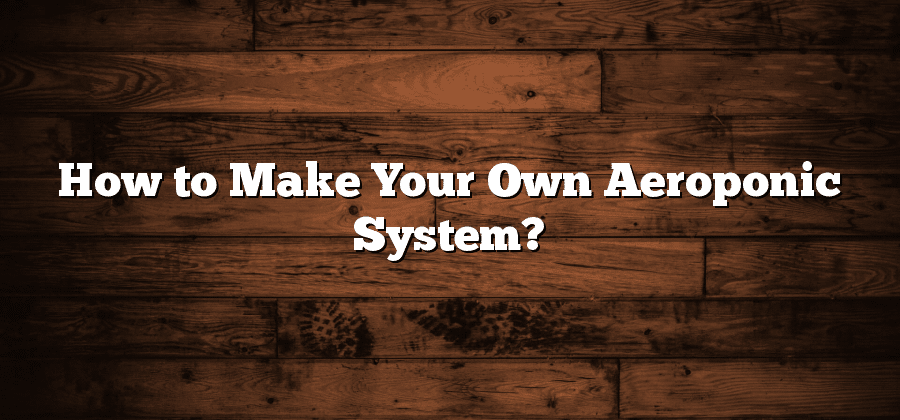Understanding the Basics of Aeroponics
Aeroponics is a modern and innovative method of plant cultivation that has gained popularity in recent years. Unlike traditional soil-based agriculture or hydroponics, aeroponics involves growing plants in an air or mist environment, with their roots suspended in the air. This technique allows for maximum oxygen exposure, which promotes rapid and healthy plant growth.
In an aeroponic system, plants receive nutrients through a fine mist or spray, ensuring that the roots receive an optimal balance of water and nutrients. This method eliminates the need for soil, reducing the risk of soil-borne diseases and pests. It also requires less water compared to traditional farming methods, making it an environmentally friendly option for food production.
By harnessing the power of air and mist, aeroponics allows plants to grow faster and produce higher yields compared to traditional methods. This makes it an attractive option for both commercial and home gardeners. With a well-designed aeroponic system, it is possible to grow a wide variety of crops, ranging from leafy greens and herbs to fruiting plants like tomatoes and peppers. Despite its advancements, aeroponics does require careful attention to factors such as temperature, humidity, and nutrient balance to ensure successful plant growth.
Selecting the Right Materials for Your Aeroponic System
When it comes to selecting the right materials for your aeroponic system, it is essential to consider durability, functionality, and the specific needs of your plants. One of the most crucial components of an aeroponic system is the growing chamber or containers. These containers should be made of a sturdy, non-toxic material that can withstand the constant exposure to moisture and nutrient solutions. Some popular options include food-grade plastic containers, such as HDPE or PVC, as well as stainless steel or even glass. It is important to note that choosing the appropriate material will depend on your budget, the size of your system, and the type of plants you plan to grow.
In addition to the containers, it is imperative to select an efficient and reliable pump for your aeroponic system. The pump will be responsible for circulating the water and nutrient solution to the plant roots. Look for a pump that is specifically designed for hydroponic or aeroponic systems, ensuring it has the necessary power and flow rate to meet the needs of your plants. It is also important to consider the noise level of the pump as well as its energy consumption. Opting for a pump that is both quiet and energy-efficient can contribute to maintaining a suitable environment for your plants while keeping operational costs down.
Building the Framework for Your Aeroponic System
When it comes to building the framework for your aeroponic system, there are a few key considerations to keep in mind. First and foremost, you’ll want to ensure that the structure is strong and sturdy enough to support the weight of the plants and equipment. This means selecting the appropriate materials, such as durable PVC pipes or metal frames, that can withstand the constant exposure to moisture and humidity.
Additionally, it’s important to design the framework in a way that maximizes the space available and allows for easy access to the plants for maintenance and harvesting. This may involve creating multiple levels or tiers within the structure, using techniques like vertical gardening or utilizing hanging baskets. By carefully planning and constructing the framework, you can create a stable and efficient system that will support the growth and thriving of your aeroponic plants.
Installing the Water and Nutrient Delivery System
Once you have built the framework for your aeroponic system, it is time to install the water and nutrient delivery system. This is a crucial step in ensuring the success of your system and providing the necessary elements for healthy plant growth.
First and foremost, you need to choose a suitable water delivery method. Many aeroponic systems utilize misting nozzles or sprayers to disperse water evenly throughout the system. These devices not only provide water to the roots of the plants but also deliver the necessary nutrients. It is important to select high-quality nozzles or sprayers that can withstand the pressure and function efficiently. Additionally, make sure that the water delivery system is capable of delivering a fine mist or spray, allowing the roots to absorb the water and nutrients effectively.
Choosing the Ideal Lighting for Your Aeroponic System
When it comes to selecting the ideal lighting for your aeroponic system, there are several factors to consider. Firstly, it is important to understand that plants require different spectrums of light for different stages of growth. For example, during the vegetative phase, plants thrive under blue light which promotes leafy growth. On the other hand, red light is crucial during the flowering stage as it stimulates bud development. Therefore, it is essential to invest in a lighting system that allows you to adjust the spectrum according to the specific needs of your plants.
In addition to spectrum, the intensity of the light is also a critical factor to take into account. The light intensity needed for your aeroponic system will depend on the plants you are growing and the desired yield. Generally, leafy greens and herbs require lower light intensity, while fruiting plants like tomatoes and peppers need higher intensity. It is recommended to use LED lights as they are energy-efficient, long-lasting, and offer precise control over light intensity. Moreover, consider the size of your aeroponic system and ensure that the lighting setup covers all the plants evenly to promote uniform growth.






